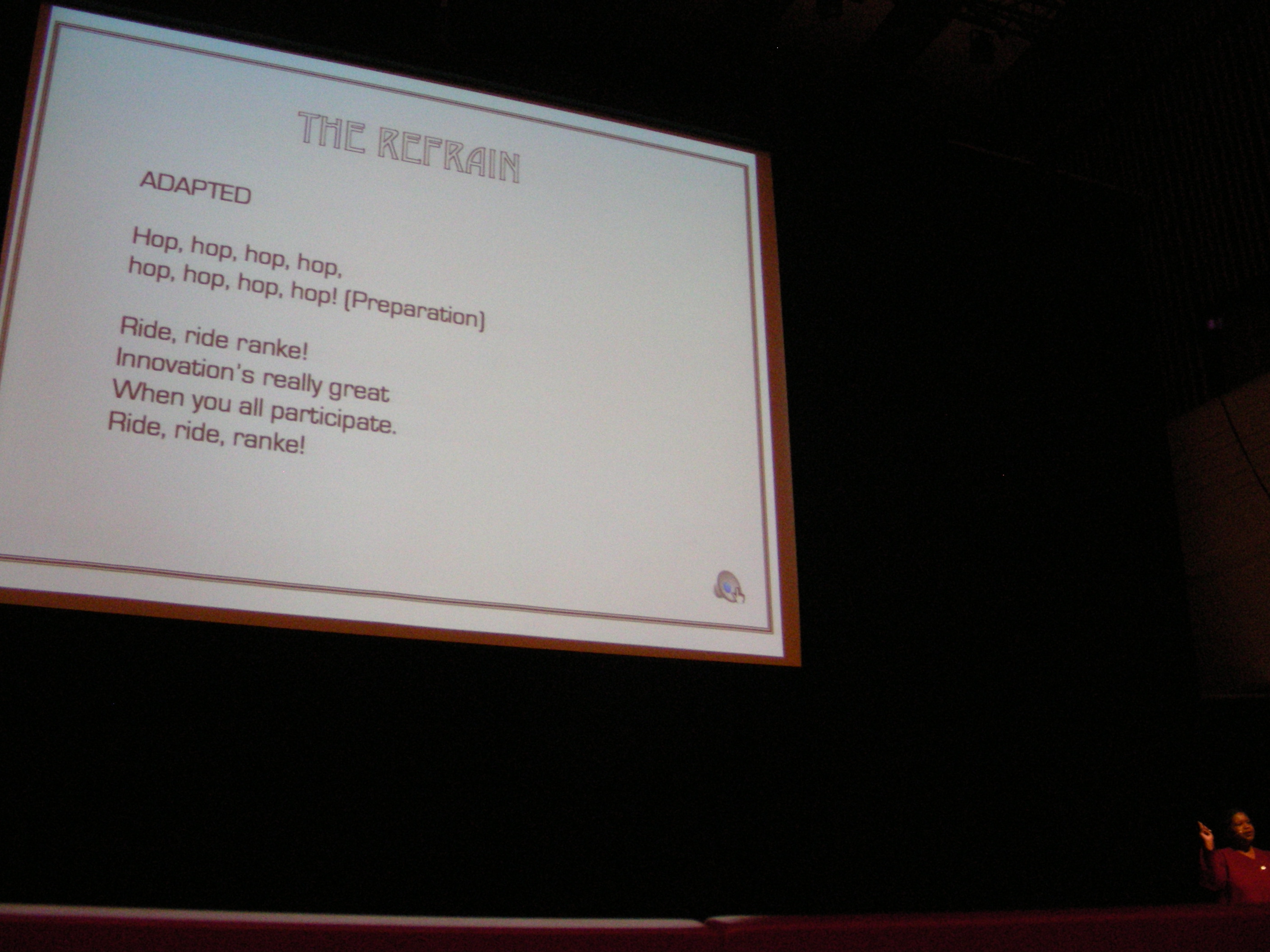Our Blog
 I had the pleasure of attending the Participatory Innovation Conference (PINC) at the University of Southern Denmark on January 12, 2011. Dori Tunstall gave a remarkable closing keynote in which she performed a demonstration of three phases that design research/design anthropology/participatory design/user-centered design have evolved through in the past few decades. It was helpful to have her perspective on the key transitions:
I had the pleasure of attending the Participatory Innovation Conference (PINC) at the University of Southern Denmark on January 12, 2011. Dori Tunstall gave a remarkable closing keynote in which she performed a demonstration of three phases that design research/design anthropology/participatory design/user-centered design have evolved through in the past few decades. It was helpful to have her perspective on the key transitions:
– In the beginning, design anthropology was about researchers as interpretive experts, delivering and recommendations to design teams and others.
– In the 1990s this evolved toward Participatory Design in which interdisciplinary teams participated in observations and defining insights. Insights are delivered in the form of experience models and personas. Researchers become facilitators with multiple, complex stakeholders involved.
– She proposes that the next phase of Design Anthropology will establish the academic foundation of this practice. With that will come a focus on social issues and an understanding of how objects affect the people around them. Designs are disruptions to the people in a culture and those disruptions should be studied. This study of objects and processes define what it means to be human. Design can seek to close the gap between the disruption and the ideal experience.
Dori is now establishing a program at Swinburn University in Melbourne, Australia. It seems to be a program that comes closest to the practice of Design Research as it has developed in the U.S., because of the focus on developing expertise and understanding around studying people and the objects and processes that they use.
From the website:
The purpose of the Master of Design (Design Anthropology) program is threefold:
She recommended some resources that help define this most recent stage of Design Anthropology, and her own work:
- Thinking of Things by Esther Pasztory (2005)
- Collective Joy by Barbara Ehrenreich (2007)
- Transmodernity by Rasa Maria Magda (2004)
- Linda Tuhivai Smith’s (1999) critique of how we conduct research in cultures
